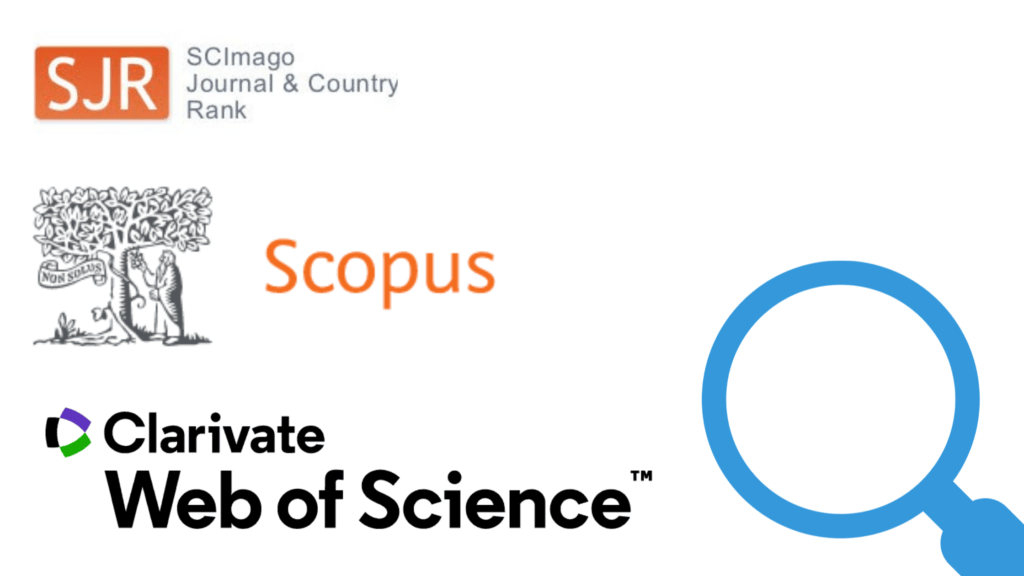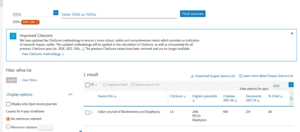
I was not sure if the journal was indexed by ISI, Scopus, or Scimago when I first heard about it. Could you please tell me how I can double-check this information?
We received this question from one of our readers, and we believe that it is a good opportunity to clarify it for all interested readers. So, let’s start explaining it further:
Web of Science
The Institute for Scientific Information (ISI) is the original producer of Web of Science (formerly known as Web of Knowledge). However, Web of Science is currently owned and maintained by Clarivate. So, many of us should update the information regarding Web of Science. It is currently known as Web of Science not Web of Knowledge and maintained by Clarivate, not ISI.
Web of Science is a collection of databases that indexes the world’s most authoritative scientific literature in the sciences, social sciences, arts, and humanities, as published in journals and conference proceedings around the world.
The Web of Science Core Collection comprises over 21,100 peer-reviewed, high-quality scientific papers published in over 250 fields of science, social sciences, and arts and humanities (including Open Access journals). There are also statistics on conference proceedings and books. The Web of Science Core Collection includes
- Science Citation Index Expanded (SCIE) – the world’s most influential scientific journals
- Social Sciences Citation Index (SSCI) — the world’s most influential social sciences journals
- Arts & Humanities Citation Index (AHCI) — the world’s most influential arts & humanities journals
- Emerging Sources Citation Index (ESCI) — a trusted set of journals with comprehensive coverage
- Conference Proceedings Citation Index (CPCI)
- Book Citation Index (BKCI)
So, to check if your target journal is indexed in the Web of Science Core Collection, you can go to http://mjl.clarivate.com/ where you can search by the ISSN number or the journal title. The results should show if your target journal is indexed in Web of Science or not and in which of the Web of Science databases it is included. See figure 1.

Figure 1: A screenshot of the search results shows the journal title, publisher, ISSN, e-ISSN, in which index of Web of Science Core Collection databases it is included, and additional databases also maintained by Web of Science.
Scopus
Scopus is the largest abstract and citation database for peer-reviewed journals, books, and conference proceedings.
To check if your target journal is indexed by Scopus, go to https://www.scopus.com/sources where you will be able to search for your target journal by title, publisher, ISSN, or even the subject area. Figure 2 shows the search results using the ISSN for one of the Scopus-indexed journals.

Figure 2: An example for Scopus sources search results
When clicking on the title of the journal, you will be able to find out more about the journal such as Scopus coverage years, the publisher, and subject areas. See figure 3.

Figure 3: An example for journal details using Scopus sources.
Please see our previous blog post about Scopus at https://www.rasayely.com/how-to-check-if-a-journal-is-indexed-in-scopus/ for more instructions and details regarding Scopus sources.
Scimago
The SCImago Journal & Country Rank is not an indexing database, as many of us believe; rather, it is a publicly accessible portal that incorporates journals and scientific indicators derived from the Scopus® database (Elsevier B.V.). This portal provides academic journal indicators that can be used to measure and study scientific domains. Separate journals can be compared or analyzed. Individual country rankings can also be compared and analyzed. Journals can be categorized by topic, subject category, or country.
Only if your target journal is indexed in Scopus will you be able to find it in SCImago. Please go to https://www.scimagojr.com/ and search for your target journal to see its metrics. Because this search engine is provided by Scopus, it may be able to assist you in determining whether or not your target journal is also indexed in Scopus. Figure 4 depicts the SCImago search results.

Figure 4: An example of the data presented in SCImago.
One of the most important indicators is the Quartile of the journal. In which quartile does the journal exist? Q1, Q2, Q3, or Q4? SCImago indicates in which quartile your target journal is. For example, figure 5 shows in which quartile the Indian Journal of Biochemistry and Biophysics falls.
Figure 5: An example of journal quartile in SCImago.
Check out Rasayely’s professional Journal Selection service if you need expert advice and detailed information on the journals that are most suited for your manuscript.
Did you find our blog post a helpful guide for scholarly researchers? Feel free to share on Linkedin, Twitter, or Facebook to share the knowledge among your colleagues. More tutorials can be found on our blog at https://www.rasayely.com/blog/ and a lot of posts are coming soon. Just subscribe to our newsletter to receive all the updates.
Resources and Further Readings
- https://www.scopus.com/sources.uri
- https://www.scimagojr.com/
- https://clarivate.com/webofsciencegroup/solutions/web-of-science/
- https://www.rasayely.com/how-to-check-if-a-journal-is-indexed-in-scopus/
play youtube,
vvlx,
xporn,
xporn,
xnxx,
xxx,
down tiktok,
Connor Turnbull,
Stephanie Ruhle,
Luke Macfarlaneare Banks Closed Good Friday,
Super Mario Bros Number,
How Do I Free Up Space On My Iphone,
Box Score For World Series,
Aurura,
Usa Economy,
Netflix Premium,
Lookout Tower Paw Patrol,
How Many Belts Does Devin Haney Have,
Average Pornstar Salary,
Cso Criminal Search Bc,
